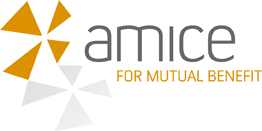
The Solvency II SME paradox
There is something of an inherent paradox in Solvency II when it comes to smaller firms. On the one hand the regulation aspires to harmonise the European insurance market, while on the other, it must allow the market to operate freely and without distortion. The latter means protecting diversity and allowing small firms to thrive and provide valuable localised services. Quite how a one-size-fits-all regulation can do that is unclear. To mitigate this paradox and create a regulation that is both uniform yet allows smaller firms to flourish in the EU’s insurance landscape, a principle of proportionality was introduced.

Proportionality
Back in 2002, when Solvency II was in its infancy, both the “Sharma Report” and the KPMG background survey, which guided much of the thinking at the outset, noted the importance of maintaining the nature of the industry and the trappings of the one-size-fits-all solution. The Directive text states, “The Commission shall ensure that implementing measures take into account the principle of proportionality, thus ensuring the proportionate application of this Directive, in particular to small insurance undertakings.” Solvency II is supposed to be applied in proportion to the size, nature and complexity of the risks of the undertaking: many feel this is not the case, in part because they still wait for guidance on the practical application of the principle.
Not only excessive but also ineffective
Proportionality is crucial for the survival of smaller firms under the regulation, “Typically, SMEs have simple structures and risk profiles,” the CEA states in a report published this year. “An across the board application of the current Pillar II and III requirements to SMEs is likely to be excessively burdensome and would, in effect, result in their policyholders paying excessive and unnecessary costs.” The CEA report highlights a number of concerns: Public disclosure will only be effective if someone reads the report, but currently disclosure is too complex and detailed. Policyholders are unlikely to read and understand complex financial documents while many SMEs are too idiosyncratic for analysts or the media to take an interest. Instead the CEA proposes a short ‘executive summary’ style report. Similarly it argues that the supervisory reporting is also too complex and of little use to regulators given the “simpler structures and risk profiles of SMEs.” In the context of governance, regulators should apply proportionality with a view to achieving the underlying objectives, and consider that in smaller firms knowledge is more widely shared – therefore individuals should be allowed to preform multiple roles. The focus should be on an individual’s ability to do a particular job rather than their specific qualification. There is also a concern that the ORSA will become “an internal model through the back door” and regulators should allow firms to develop an ORSA process that reflects their needs.
Solvabilité II, a good question but poor answer

One organisation that is particularly vocal about the effect of Solvency II on SMEs is ROAM (Réunion des Organismes d’Assurance Mutuelle) – a professional association of French mutuals. The association runs the Stop Solvency 2website; its byline “a good question but poor answer” sums up its views. ROAM’s main concern is that, “many players will not be able to continue doing business or that a sharp fall in supply may occur, and as a result in many cases insurance prices will be pushed higher without improving the security of consumers,” according to its website. For the past five year it has raised its concerns about the regulation and has been a strong proponent of Swiss-style transition, where insurers and regulators had three years training prior to implementation. ROAM successfully lobbied agains the almost exclusive use of English language in related texts, which it says, “has handed an abnormal advantage to English speakers and has prevented the stakeholders in general from responding appropriately to the various consultations.”
Solvency II and SMEs


AMICE (pronounced a-mee-che), the Association of Mutual Insurers and Insurance Cooperatives in Europe, an umbrella organisation representing over 100 members, has been active in putting its concerns to the Commission. Silvia Herms, Senior Advisor – Economic and financial affairs at AMICE, notes that resources are an even greater stress than capital to many of their members. “In smaller firms it is often the case that one person performs a number of key functions, as the reporting requirements grow, many of our members are having to bring in external consultants to cope with the increasing work load,” she told Solvency II Wire. There is also a sense that in some cases SMEs are adopting a wait-and-see attitude, especially after so many participated in the QIS5 exercise. According to Martin Shaw, Chief Executive of the Association of Financial Mutuals (AFM), “After investing a lot of time and resources in QIS5 many SMEs are of the view they should wait until the final draft of the Directive is published. This complacency is misguided,” he told Solvency II Wire. His warning is timely given Commissioner Barnier’s riposte to industry critics on 1 June in which he states categorically, “Solvency II will enter into force as planned on 1 January 2013.” Mr Shaw notes that the scepticism being expressed is perhaps in some way imbued by informal reports at the FSA conference that despite its tough rhetoric on the deadline, the FSA might think otherwise. But, he insists, firms would be wise to continue implementation measures to meet the official deadline.
Coming up with solutions

Still, the financial and resource burden remains substantial for many smaller firms and the AFM is developing a number of shared tools to help its members. For example, it has estimated that Solvency II reporting will require about two million actuarial calculations, however 95% of those can be standardised even for the diverse range of firms belonging to AFM. “We are looking at developing shared solutions, which enable firms to share platforms or templates to get them to the right outcome more cost effectively,” Mr Shaw said. The AFM is also exploring an ORSA reporting tool that will be based on a peer benchmark. “The FSA has shown an interest in these ideas and has expressed a willingness to work with us on these solutions,” Mr Shaw added.
Solvency II reshaping the landscape?
It is as yet unclear what the full effect of Solvency II will be on the European insurance landscape in general, or the diversity of SMEs in particular. But perhaps the reason behind a recent merger of two mutual societies may foretell of things to come. In March the Schoolteachers Friendly Society merged into the Oddfellows group. In its Special General Meeting notice the Society explains the reason for the merger (emphasis added), “The Society’s required minimum capital requirement is currently in the region of £700,000 whereas, under the new Solvency II legislation, the Society’s required minimum capital requirement will increase to approximately £3.2m at the beginning of 2013. “It should be noted that no change in the profile of the Society’s methods of operation, risks or liabilities has caused the increase in the Society’s minimum capital requirement and it is purely as a result of the new European legislation.”






1 thought on “Solvency II: harmoniser or destroyer?”
Comments are closed.